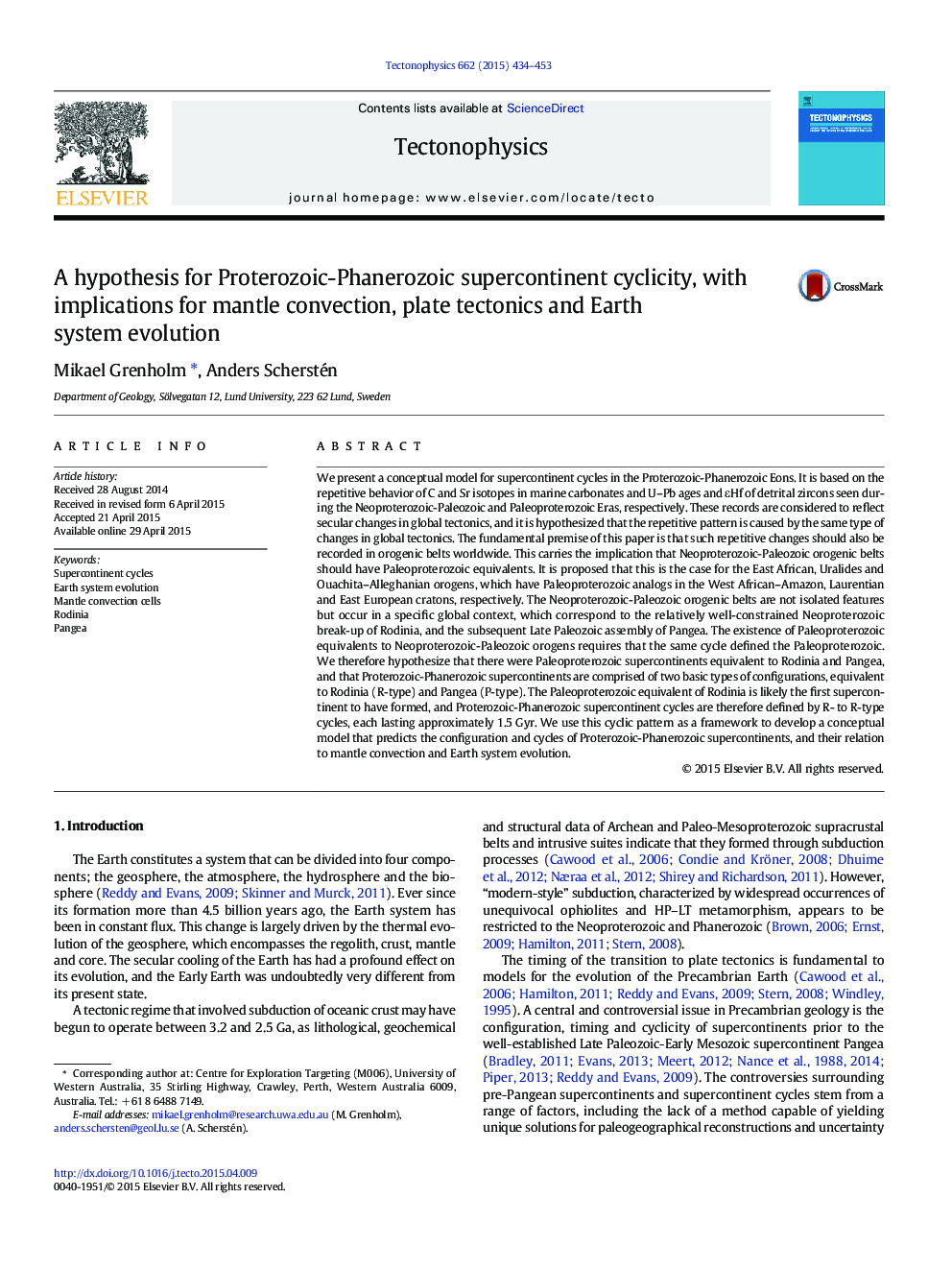| کد مقاله | کد نشریه | سال انتشار | مقاله انگلیسی | نسخه تمام متن |
|---|---|---|---|---|
| 4691480 | 1636733 | 2015 | 20 صفحه PDF | دانلود رایگان |

• Rodinia and Pangea represent the two basic types of supercontinent configurations.
• True supercontinent cycles involve breakup-assembly of Rodinia-type supercontinents.
• The convective pattern in the mantle is the same during each such cycle.
• During these cycles, Pangea-type supercontinents are only transient stages.
• Rodinia-type supercontinent break-ups coincide with atmospheric oxygenation events.
We present a conceptual model for supercontinent cycles in the Proterozoic-Phanerozoic Eons. It is based on the repetitive behavior of C and Sr isotopes in marine carbonates and U–Pb ages and εHf of detrital zircons seen during the Neoproterozoic-Paleozoic and Paleoproterozoic Eras, respectively. These records are considered to reflect secular changes in global tectonics, and it is hypothesized that the repetitive pattern is caused by the same type of changes in global tectonics. The fundamental premise of this paper is that such repetitive changes should also be recorded in orogenic belts worldwide. This carries the implication that Neoproterozoic-Paleozoic orogenic belts should have Paleoproterozoic equivalents. It is proposed that this is the case for the East African, Uralides and Ouachita–Alleghanian orogens, which have Paleoproterozoic analogs in the West African–Amazon, Laurentian and East European cratons, respectively. The Neoproterozoic-Paleozoic orogenic belts are not isolated features but occur in a specific global context, which correspond to the relatively well-constrained Neoproterozoic break-up of Rodinia, and the subsequent Late Paleozoic assembly of Pangea. The existence of Paleoproterozoic equivalents to Neoproterozoic-Paleozoic orogens requires that the same cycle defined the Paleoproterozoic. We therefore hypothesize that there were Paleoproterozoic supercontinents equivalent to Rodinia and Pangea, and that Proterozoic-Phanerozoic supercontinents are comprised of two basic types of configurations, equivalent to Rodinia (R-type) and Pangea (P-type). The Paleoproterozoic equivalent of Rodinia is likely the first supercontinent to have formed, and Proterozoic-Phanerozoic supercontinent cycles are therefore defined by R- to R-type cycles, each lasting approximately 1.5 Gyr. We use this cyclic pattern as a framework to develop a conceptual model that predicts the configuration and cycles of Proterozoic-Phanerozoic supercontinents, and their relation to mantle convection and Earth system evolution.
Journal: Tectonophysics - Volume 662, 1 November 2015, Pages 434–453